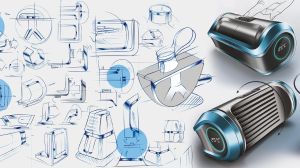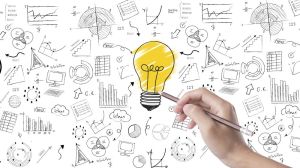Introduction
Indeed, at RexterTech, we believe that great products are made, not born. They take an elaborate process of planning and designing with empathy for users and with a technical precision that rounds them off in the end. Be it a startup that wants to bring its MVP to market or an established company looking to redevelop its current digital product, this approach will convert your idea into a winning solution in product design.
To that end, we will take you along on this guide as we show you our step-by-step user product design approach which of course emphasizes clarity, ease of use and outcome.


What Is Product Design?
A product design is the process of making either a digital product or a physical product that specifies solving a particular problem or meeting a user’s need while being feasible to develop. It’s not just about its looks-it’s making it useful, intuitive, and enjoyable.
At RexterTech, product design includes:
– UX (User Experience) Design
– UI (User Interface) Design
– Wireframing and Prototyping
– Usability Testing
– User Flow Optimization
– Functional Design Specifications
Product design is a process through which a digital product or a physical product solves an exact problem or needs fulfillment by a user while being feasible to develop. It’s not only about its looks; it is making the thing useful, intuitive, and enjoyable.
Why a Structured Design Process Matters
Many products fail, mostly not because the idea was bad, but because the design process was either not clear or was rushed.
A well-defined design process:
- Reduces development errors
- Improves teamwork and group dynamics
- Saves time and cost
- It is a completely puffery product that end-users love
Our 7-Step Product Design Process
Now, one of the most crucial reasons for the success of a new mobile is the channelling of a fresh design process to polished, agile perfection.
These are the steps that follow:
Step 1: Discovery & Research
This is the starting point for any innovation. Here, we determine
- Your business goals
- Your target users
- The problem that you are solving
Competitor analysis, user interviews, and market research will be conducted at this stage, creating the very base of your product.
Step 2: Defining Requirements
So, you convert the research study into actual needs:
- Each feature to be included in the product
- The platforms that it will be on
- Technically, what can be done?
- A scope document will be created with clear success metrics.
Step 3: Wireframes & User Flow Mapping
Even before any design comes into view, some flow diagrams and wireframes should be drawn.
- Visualize the final product to be built before even moving to design
- Minimize confusion after the developers take charge of the solution
- Help prevent investment in design without a return
Step 4: UI Design
This is where the visual look and feel of the product is built.
- Typography, color, icons, and spacing
- Responsive design for multiple devices
- Accessibility and visual hierarchy
Style guides would be made after the designs’ finalization for a more cohesive look.
Step 5: Prototyping
We create interactive prototypes using Figma or Adobe XD.
- Test interactions before coding
- Get stakeholder buy-in
- Mimic the real experience for users
Step 6: Usability Testing
We put the prototype in a field of real users or stakeholders, depending on the method used.
- Ensure the prototype flags any obvious usability blocks
- Collect feedback from real users
- Allow design iterations
Depending on the nature of the product, the testing may occur either at a distance or on-site.
Step 7: Handover to Development
Above all, prepare for a swift handover to developers so they can pick up where we left them:
- Design specs and assets delivered
- Coordination with front-end or back-end developers
- Continuous backing through the implementation procedure
Tools We Use at RexterTech
Our team uses modern tools to speed up collaboration and maintain precision:
Figma – UI Design & Prototyping
Miro – Collaborative brainstorming
Zeplin – Developer handoff
Notion – Documentation
Jira – Task and sprint management
Common Mistakes in Product Design
Even the best ideas can fail with poor execution.
Here are the pitfalls we help our clients avoid:
Designing without user research
Too many features in the MVP
Inconsistent UI across platforms
Ignoring accessibility guidelines
No feedback or testing loop
Final Thoughts
Creating a successful product doesn’t happen by accident—it’s the result of a thoughtful design process. At RexterTech, we combine creativity with structure to ensure you don’t just build a product, but build the right product.
We’re ready to bring your vision to life. Let’s design something amazing—together.



